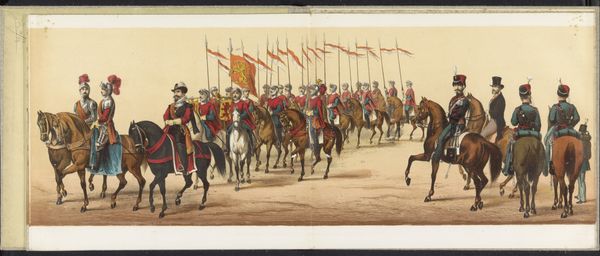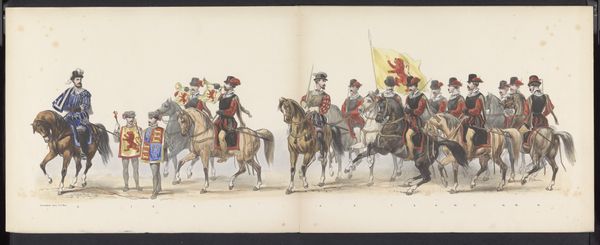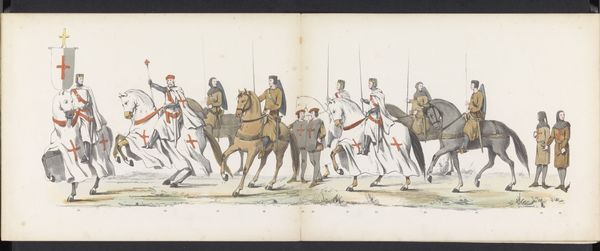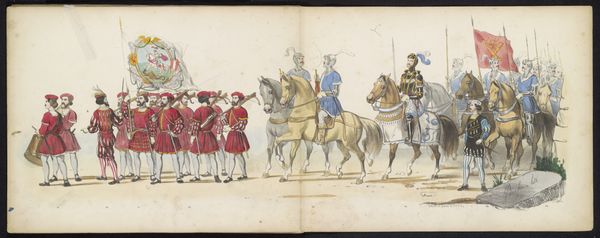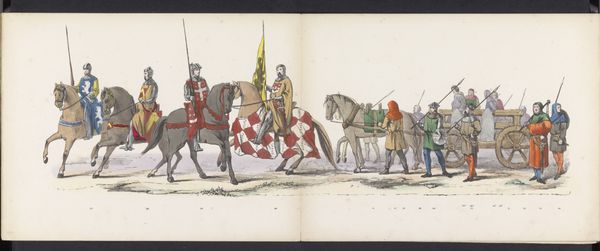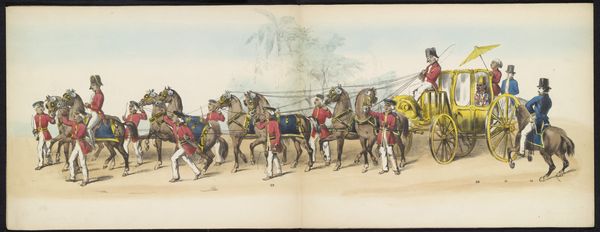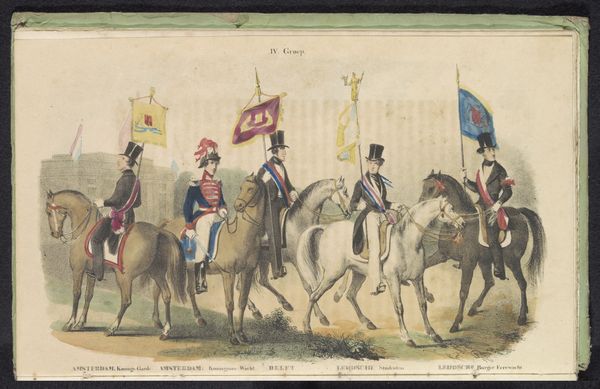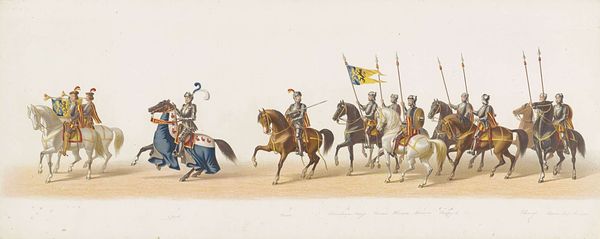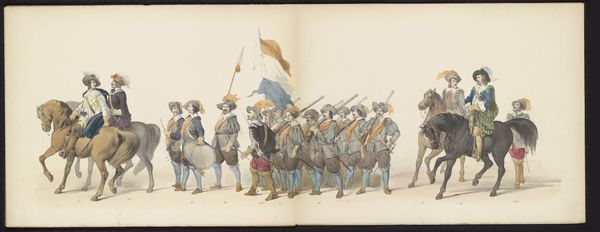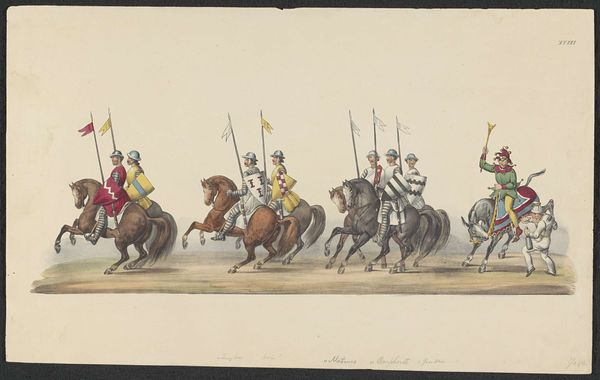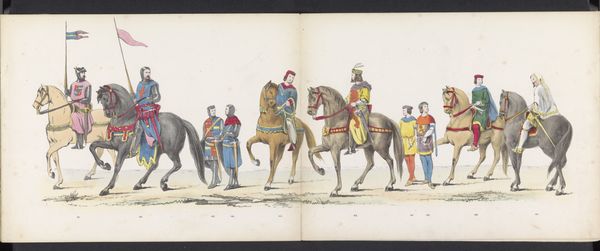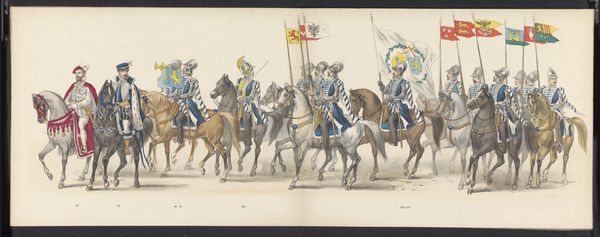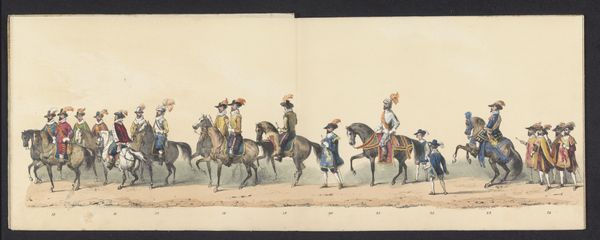
watercolor
#
narrative-art
#
watercolor
#
coloured pencil
#
romanticism
#
watercolour illustration
#
genre-painting
#
academic-art
Dimensions: height 285 mm, width 750 mm
Copyright: Rijks Museum: Open Domain
Curator: Immediately, I sense a festive air, perhaps celebratory? There's a grand procession depicted. Editor: Yes, the image you're describing is titled "Maskerade van de Leidse studenten, 1850 (plaat 4)," created around 1850 by Carel Christiaan Antony Last. It's currently housed at the Rijksmuseum. A watercolour, capturing a masquerade of students in Leiden. Curator: Watercolours are interesting as mediums, they seem especially adept to genre scenes such as this. There is something especially evocative about the lightness that it can capture, perhaps amplifying the feeling of fleeting joy? What does it say about student culture at the time? Editor: This piece speaks volumes about the role of academic institutions and their visual culture in shaping student identity. It reflects how traditions and performances, like these masquerades, solidified social bonds and perpetuated group values within the university. Note the uniforms. Curator: The costumes immediately suggest a re-enactment or a theatrical performance, perhaps referencing historical figures. Look closely at the figures' garb. How do these constructed personas work as visual symbols? Editor: Indeed. Academic art in the 19th century, especially genre paintings such as this, became powerful tools for instilling a sense of civic pride and projecting an image of enlightened citizenship and historical connection. It is an artistic and social representation all at once. Curator: The composition, even in watercolour, echoes grander historical paintings, which feels significant. Is it trying to imbue the student activities with an important symbolism? The horses are drawn carefully, and it evokes imagery of leadership from bygone times. Editor: It's possible to read the masquerade as not just celebration, but also as a negotiation of social status, mimicking the structure and symbols of authority and leadership for the aspiring young burghers. Notice the choice of colour, red predominately, a colour deeply associated with prestige and pomp. Curator: Thinking about these colour associations opens the work further still. What we initially perceived as “celebratory” could represent a structured ritual with implied codes of social power. Editor: A fascinating layer, indeed. Studying such seemingly minor works, such as this plate, can allow us to glimpse broader mechanisms of power at play, revealing aspects about performance, social construction and national identity formation.
Comments
No comments
Be the first to comment and join the conversation on the ultimate creative platform.
